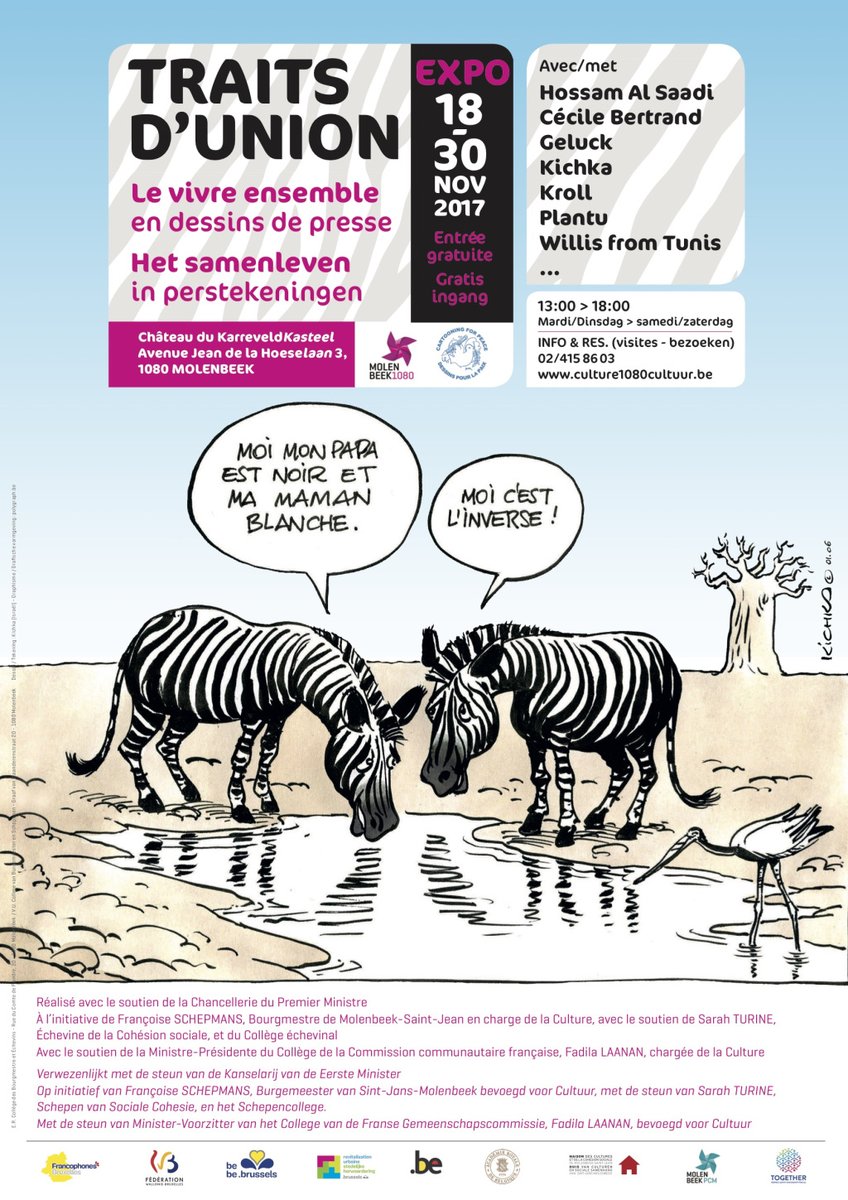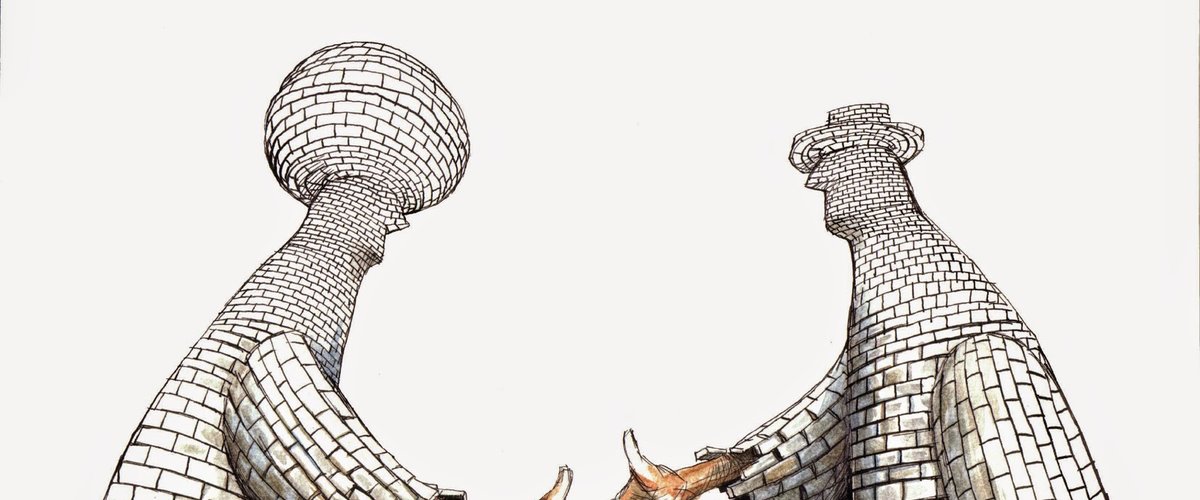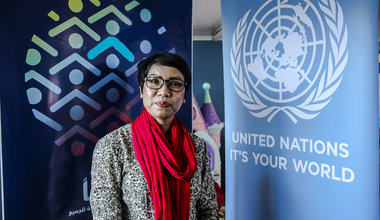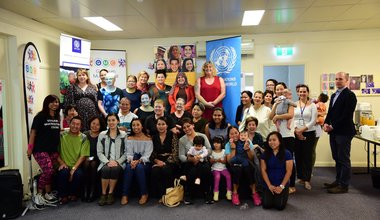Pencils Bring Dialogue in Molenbeek

For those who only know the Brussels neighbourhood of Molenbeek-Saint Jean from newspaper headlines at the time of the terrorist attacks on Paris and Brussels, peace may not be the first word that comes to mind. It may therefore come as a surprise that Molenbeek-Saint Jean should be the venue of an exhibition of Cartooning for Peace.
The French cartoonist, Plantu of Le Monde, President of Cartooning for Peace, immediately accepted when Françoise Schepmans, the Mayor of Molenbeek-Saint Jean, invited him a year ago to work with youth in what he calls “the epicentre of the earthquake that is shaking our fragile Europe.”
The exhibition was giving the Together label, the UN-led campaign as it was in the spirit of combatting stereotypes and promote respect and dignity for refugees and migrants. Cartooning for Peace is a great example of how dialogue and arts can be used to connect people in the spirit of leaving no one behind. “Connecting people – Cartoons for peaceful coexistence”, is in fact more than a display of drawings, since cartoonists from France, Belgium Tunisia, Syria and Israel worked with youth in curating it and engaged and debated with the pupils from local schools.
The exhibition was giving the Together label, the UN-led campaign as it was in the spirit of combatting stereotypes and promote respect and dignity for refugees and migrants. Cartooning for Peace is a great example of how dialogue and arts can be used to connect people in the spirit of leaving no one behind. “Connecting people – Cartoons for peaceful coexistence”, is in fact more than a display of drawings, since cartoonists from France, Belgium Tunisia, Syria and Israel worked with youth in curating it and engaged and debated with the pupils from local schools.
“The encounters and the conversations were absolutely positive,” Plantu told UNRIC in an interview. “The drawings are no doubt interesting but what was more interesting was the reaction of youth, some who agreed and others who didn´t agree, with the content of the cartoons. I think we have to invent new dialogues with troubled areas, and we have already decided to engage with youth in Verviers in Belgium, Clermont Ferrand in France and elsewhere in Europe.”
The exhibition of 30 press drawings took place 15-30 November in the Château du Karreveld, in the midst of a park with a peaceful lake in Molenbeek, another reminder of how misleading stereotypes can be. The cartoons were organized according to themes such as stereotypes, dialogue and liberties, or migration and solidarity, a theme cartoonists Zlatovsky from Russia and Geluck from Belgium approached from different perspectives. The former studies this event with a critical eye showing how some Europeans can be hostile to migration, while the Belgian uses humour to show the absurdity of some of the narratives attached to migrants coming in Europe.
Cartoonists for Peace has been active since 2006 when it was launched by Plantu and the then UN Secretary-General Kofi Annan. Plantu thinks that the 162 members-strong Cartoonist for peace is as relevant as ever: “Cartooning for Peace was supposed to be a single event as a reaction to the Fatwa against the Danish Mohamed Cartonists, who we all supported. Kofi Annan then suggested that it would continue as an association. The years that have passed since then have proven that he was right when he foresaw that in the age of the internet a picture drawn in Copenhagen or in the backroom of a brasserie in Saint-Germain-des-Prés, can have an instant worldwide impact on the net. Cartooning for Peace anticipated the tragic events of Paris, Brussels and elsewhere.”







